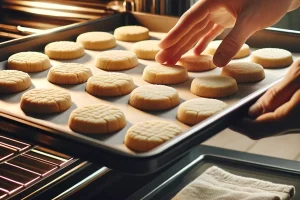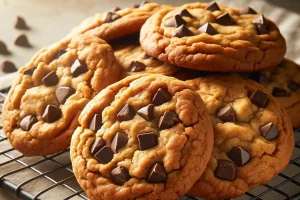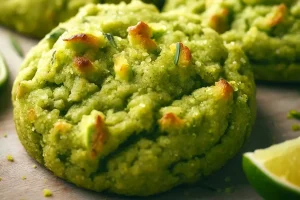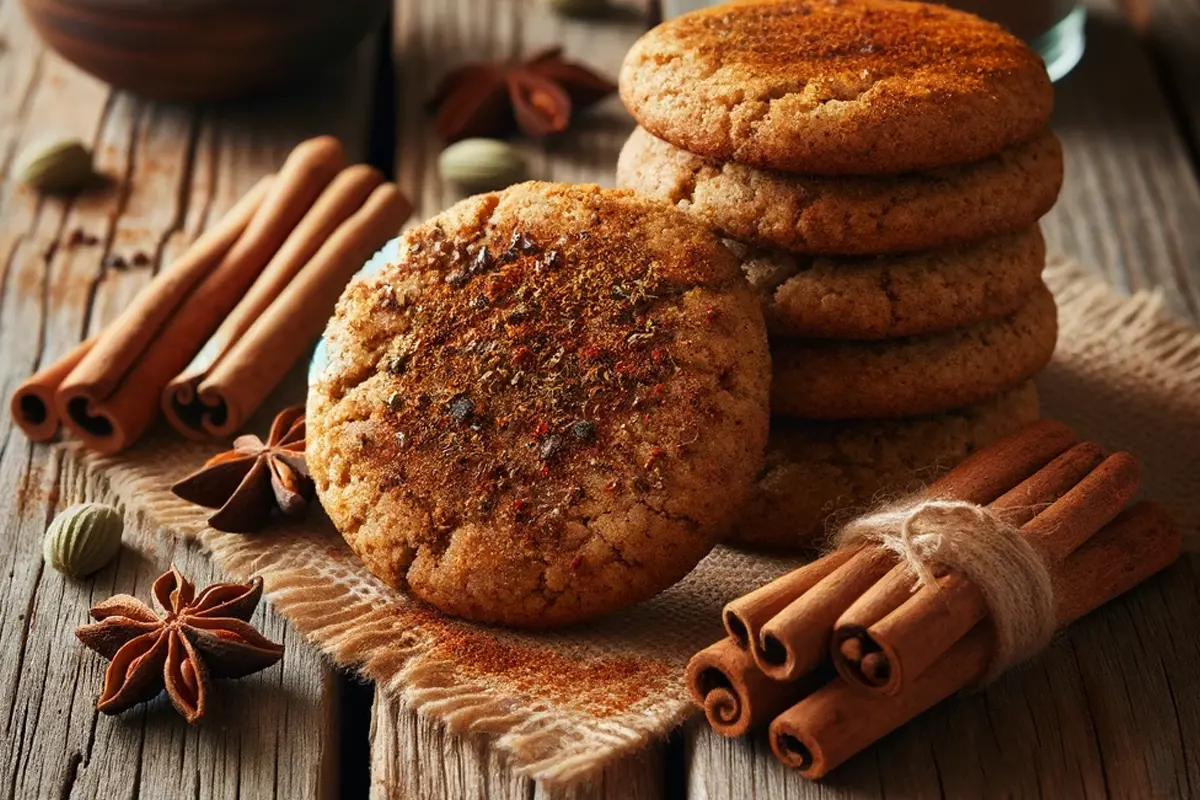Embarking on the delightful journey of baking gluten-free cookies is akin to unlocking a treasure trove of culinary creativity, especially For those navigating the choppy waters of dietary restrictions, gluten-free cookies offer a beacon of hope. This comprehensive guide aims to illuminate the path for both seasoned bakers and novices alike, ensuring that a gluten-free diet doesn’t mean a compromise on taste or texture. From unraveling the science behind gluten-free baking to exploring innovative recipes that tantalize the taste buds, we’ve got every base covered. So, preheat your ovens, and let’s dive into the world of gluten-free cookies, where dietary needs meet delicious treats.
Introduction to Gluten-Free Cookies
The Rising Popularity of Gluten-Free Cookies
In recent years, the demand for gluten-free products has skyrocketed, not just among those with celiac disease or gluten intolerance but also among health-conscious individuals seeking variety in their diets. Gluten-free cookies, in particular, have seen a significant surge in popularity, merging indulgence with health consciousness, merging the joy of indulging in sweets with the need for allergen-free options. But, what makes gluten-free cookies rise? The answer lies not just in the choice of ingredients but in the innovation and creativity bakers bring to the table.
Understanding Gluten and Its Effects
Gluten, a major protein component of wheat, is essential in providing the elasticity and structure that are key to traditional baking. However, gluten proteins like glutenin and gliadin, encoded on specific chromosomes, can elicit pathogenic immune responses in susceptible individuals, leading to gluten-related disorders (GRDs) such as celiac disease, wheat allergy, and non-celiac gluten sensitivity. For these individuals, removing gluten from their diet becomes imperative, not just a preference. Read more about the genetic characteristics of gluten and its role in gluten-related diseases. Transitioning to gluten-free baking involves a blend of science and art, as bakers seek to replicate the texture and flavor of their gluten-containing counterparts.
Why Choose Gluten-Free?
Opting for gluten-free cookies isn’t just about adhering to dietary restrictions; it’s also about embracing a wider spectrum of flavors and ingredients. The world of gluten-free baking is vast, from rice flour and almond meal to innovative alternatives like kabocha squash flour. This diversity not only caters to those with gluten sensitivities, but it also opens up a new realm of flavors but also opens up a realm of possibilities for culinary experimentation, making gluten-free baking a rich and rewarding endeavor.
In crafting gluten-free cookies, the challenge often lies in achieving the desired rise without the structural support of gluten. Bakers turn to a variety of techniques and ingredients, such as xanthan gum, eggs, and baking powder, to introduce airiness and lift, ensuring that each bite is as delightful as its gluten-containing counterparts.
As we delve deeper into the nuances of gluten-free baking, keep in mind that this journey is about more than just substituting ingredients. It’s about redefining what it means to bake and enjoy cookies, ensuring that everyone, regardless of dietary needs, can partake in the simple joy of a freshly baked cookie. So, let’s roll up our sleeves and embark on this gluten-free baking adventure, where creativity knows no bounds.

The Science of Gluten-Free Baking
Navigating the World of Gluten-Free Flours
In the grand tapestry of gluten-free baking, flours made from alternative sources play the lead role. Each flour, from the nutty almond meal to the hearty buckwheat, brings its unique characteristics to the table. Almond flour, for example, lends a moist, rich texture perfect for decadent treats, while coconut flour absorbs moisture like a sponge, requiring adjustments in liquid ingredients to achieve the perfect dough consistency.
Popular Gluten-Free Flour Alternatives
Transitioning from traditional wheat flour to gluten-free alternatives requires a dash of courage and a pinch of curiosity. Blends often work best, combining the lightness of rice flour with the binding power of tapioca starch. These mixtures strive to replicate the structure and texture that gluten provides, ensuring that your cookies don’t crumble at the slightest touch.
Role of Alternative Flours in Baking
Each gluten-free flour plays a unique role in the baking process, contributing to the texture and taste, contributing not just to the flavor but also to the texture and structure of the cookies. For instance, oat flour can introduce a tender crumb, while sorghum flour offers a mild, sweet profile. Understanding these roles allows bakers to tailor their flour blends to the specific qualities they seek in their finished products, be it crispness, chewiness, or a delicate crumb.
The Chemistry Behind Gluten-Free Cookies
The secret to the rise and texture of gluten-free cookies lies in the interplay of leavening agents and binders. Without gluten to trap air bubbles, alternatives like xanthan gum or guar gum step in to provide elasticity and stickiness, mimicking gluten’s network-forming properties.
Achieving the Perfect Texture
Gluten-free cookies often face the challenge of achieving the desired texture without becoming too dense or crumbly. The key lies in the balance of wet and dry ingredients, with eggs, applesauce, or even avocado serving as moisture-rich additions that contribute to a tender bite.
Tips for Successful Gluten-Free Baking
To elevate your gluten-free baking game, consider these pearls of wisdom:
- Experiment with flour blends to find the perfect combination for your recipe.
- Don’t skimp on the binders; they’re crucial for structure and texture.
- Be mindful of the moisture content; gluten-free flours vary widely in their absorbency.
- Embrace trial and error. The path to gluten-free baking mastery is paved with both successes and learning opportunities.
As we venture further into the realm of gluten-free baking, remember that each ingredient holds the potential to transform your cookies from mere treats into masterpieces. The science of gluten-free baking is not just about replacing wheat flour but about understanding the symphony of interactions among diverse ingredients, leading to creations that delight and surprise. So, preheat your oven and let the alchemy begin, for in this world of gluten-free wonders, the possibilities are as boundless as your imagination.
Gluten-Free Cookie Recipes
Classic Gluten-Free Cookie Recipes
The classics never go out of style, and in the realm of cookies, they hold a special place in our hearts. Gluten-free baking brings these beloved treats back to the table, ensuring everyone can indulge in a nostalgic bite.
- Gluten-Free Chocolate Chip Cookies: The quintessential cookie, reimagined without gluten but retaining all the gooey, chocolatey goodness. By utilizing a blend of rice and almond flours, these cookies achieve the perfect balance between crisp edges and chewy centers, making them irresistible to cookie lovers of all ages.
- Gluten-Free Shortbread: This buttery delight, with its crumbly texture and delicate flavor, is a testament to the simplicity of ingredients and the magic of gluten-free baking. A combination of coconut flour and tapioca starch, paired with the richness of butter (or a dairy-free alternative), creates a shortbread that melts in your mouth, offering a moment of pure, unadulterated joy.
Innovative Gluten-Free Cookie Ideas
For those who tread the path less traveled, gluten-free baking is a canvas waiting for bold strokes of creativity. These innovative recipes push the boundaries, incorporating unexpected ingredients and flavors that tantalize the palate.
- Avocado Lime Cookies: Venture into the unexpected with these vibrant cookies, where the creaminess of avocado meets the zesty kick of lime. These treats are a dance of flavors, with a tender texture that defies the usual cookie conventions, thanks to the moisture from the avocado and the lightness of a well-crafted gluten-free flour blend.
- Chai-Spiced Teff Cookies: Drawing inspiration from the aromatic world of spices, these cookies are a warm hug in edible form. Teff flour, with its nutty undertones, provides the perfect backdrop for a melange of chai spices, creating a sensory experience that transports you to a cozy afternoon by the fire, one bite at a time.
Baking gluten-free cookies is a journey of discovery, inviting you to explore the depths of your pantry, one that invites you to explore the depths of your pantry and the breadth of your imagination. Each recipe is a stepping stone, leading you closer to mastering the art of gluten-free baking. Remember, the key to success lies not just in following recipes but in understanding the essence of each ingredient and its role in the grand symphony of flavors and textures.
As you preheat your oven and line your baking sheets, let these recipes be your guide, your starting point on the path to gluten-free baking excellence. With each batch of cookies, you’re not just creating treats; you’re weaving memories, crafting moments of joy that transcend the boundaries of dietary restrictions. So, grab your mixing bowl and let the magic begin, for in the world of gluten-free cookies, every bite is a celebration of creativity and inclusion.

Gluten-Free Baking Tips and Tricks
Essential Gluten-Free Baking Equipment
Embarking on your gluten-free baking adventure begins with the right tools. Just as a painter needs their brushes, a baker needs their equipment.
- High-Quality Digital Scale: Precision is key in gluten-free baking, where the balance of ingredients can make or break a recipe. A digital scale ensures you’re adding the exact amount of flour, sugar, and binders needed for that perfect batch of cookies.
- Silicone Baking Mats: Say goodbye to sticking and hello to evenly baked cookies with silicone mats. They provide a non-stick surface and distribute heat evenly, ensuring your cookies are perfectly cooked every time.
Key Ingredients for Gluten-Free Cookies
The heart of gluten-free baking lies in the ingredients. Knowing which ones to keep in your pantry can turn an impromptu baking session into a triumph.
- A Variety of Gluten-Free Flours: Stock up on a range of gluten-free flours, from almond and coconut to teff and sorghum. Each brings its unique flavor and texture to your cookies, allowing you to experiment and discover your favorite blends.
- Xanthan Gum: Often the unsung hero of gluten-free baking, xanthan gum mimics gluten’s binding properties, ensuring your cookies don’t crumble at the slightest touch.
Storage and Shelf Life of Gluten-Free Cookies
Gluten-free cookies can be just as delicious the next day, provided they’re stored correctly.
- Airtight Containers: Keep your cookies fresh and moist by storing them in airtight containers. This prevents them from drying out and losing their delightful texture.
- Freezing for Longevity: If you’ve baked more cookies than you can eat, freezing is a great option. Place them in a single layer on a baking sheet to freeze individually, then transfer to a freezer-safe bag. This way, you can enjoy a gluten-free treat anytime, just by warming it in the oven.
Tips for Successful Gluten-Free Baking
Finally, here are some golden nuggets of wisdom to guide you in your gluten-free baking journey:
- Patience is a Virtue: Gluten-free doughs and batters often benefit from resting. This allows the flours to fully hydrate and the flavors to meld, resulting in cookies with improved texture and taste.
- Embrace Experimentation: Gluten-free baking is an art and a science. Don’t be afraid to experiment with different flour blends and ingredients. Each batch of cookies is an opportunity to learn and refine your skills.
- Mind the Spread: Gluten-free cookies tend to spread more. To prevent this, consider chilling the dough before baking and leaving ample space between each cookie on the baking sheet.
With these tips and tricks up your sleeve, you’re well-equipped to navigate the exciting world of gluten-free baking. Remember, each baking session is an opportunity to explore, learn, and, most importantly, enjoy the process. The true joy of baking comes not just from the delicious treats you create but from the memories and experiences you gather along the way. So, preheat your oven, gather your ingredients, and let the magic of gluten-free baking unfold in your kitchen.
Addressing Common Challenges
Overcoming Gluten-Free Baking Obstacles
Gluten-free baking presents a unique set of challenges, from achieving the right texture to ensuring structural integrity. Here’s how to tackle them head-on:
- Crumbly Cookies: One of the most frequent issues in gluten-free baking is cookies that crumble at the slightest touch. This often stems from a lack of binding agents in the dough. To counteract this, ensure your recipe includes xanthan gum or guar gum, which mimic gluten’s elastic properties, providing structure and cohesion to your cookies.
- Gummy Texture: At the other end of the spectrum, gluten-free cookies can sometimes turn out gummy or overly dense. This is typically due to an imbalance in moisture or an excess of binding agents. To avoid this, measure your ingredients precisely, especially when it comes to flour and xanthan gum. Remember, a little goes a long way with binders!
- Lack of Flavor: Without the malty nuances that gluten-containing flours impart, gluten-free cookies can sometimes lack depth in flavor. Combat this by enhancing your recipes with high-quality vanilla extract, a pinch of salt, or spices like cinnamon and nutmeg, which add layers of flavor and warmth to your cookies.
- Uneven Baking: Gluten-free cookies can be prone to uneven baking, with some cookies browning too quickly while others remain undercooked. To ensure even baking, rotate your baking sheet halfway through the baking time and consider using an oven thermometer to ensure your oven’s temperature is accurate.
Common Pitfalls and How to Avoid Them
Awareness of potential pitfalls is the first step toward flawless gluten-free cookies. Here are additional tips to keep in mind:
- Avoid Overmixing: Gluten-free doughs don’t benefit from extensive mixing, as there’s no gluten to develop. Mix just until your ingredients are combined to prevent your cookies from becoming tough.
- Mind the Flour Swap: Directly substituting gluten-free flour for wheat flour in conventional recipes rarely yields satisfactory results. Instead, use recipes designed for gluten-free baking or invest in a high-quality gluten-free flour blend that’s formulated to mimic the properties of wheat flour.
- Don’t Skip the Chill: Chilling the dough before baking not only helps in controlling the spread but also intensifies the flavors in your cookies. A little patience can lead to significantly better results.
Facing challenges in gluten-free baking is part of the journey, a testament to your commitment to crafting inclusive, delicious treats. With each batch of cookies, you’ll gain insights and skills that enhance your baking prowess. Remember, the most successful bakers are those who embrace challenges as opportunities for growth and innovation. So, preheat your oven and ready your baking sheets; a world of gluten-free delights awaits, where every challenge overcome is a step toward baking perfection.

FAQs
Frequently Asked Questions About Gluten-Free Cookies
Q: Can I substitute gluten-free flour on a 1:1 basis with regular flour in any cookie recipe?
A: While tempting, direct substitution often leads to varied results due to differences in protein content, absorption rates, and binding properties. It’s best to use recipes formulated for gluten-free flours or invest in a high-quality gluten-free flour blend specifically designed to mimic the properties of wheat flour.
Q: Why do my gluten-free cookies crumble so easily?
A: The lack of gluten, which acts as a binder in traditional baking, can make gluten-free cookies more fragile. To combat this, ensure your recipe includes a binding agent like xanthan gum or eggs, which help to provide structure and elasticity, mimicking the role of gluten.
Q: How can I achieve a chewy texture in gluten-free cookies?
A: For that sought-after chewy texture, focus on your choice of flour and sweetener. Almond flour and brown sugar, for example, can lend moisture and chewiness. Additionally, underbaking cookies slightly can also help retain a gooey, chewy center.
Q: What makes gluten-free cookies rise?
A: Gluten-free cookies rely on leavening agents such as baking powder, baking soda, or eggs to rise. The key is to balance these ingredients correctly to ensure they provide enough lift and airiness without gluten.
Q: Can I use any type of gluten-free flour for my cookies?
A: While variety is one of the joys of gluten-free baking, not all flours are created equal. Some, like coconut flour, are highly absorbent and may require adjustments to liquid ingredients. It’s often best to start with a recommended gluten-free flour blend or a recipe’s specific flour recommendation to ensure success.
Q: Is it necessary to rest gluten-free cookie dough before baking?
A: Yes, resting can be particularly beneficial for gluten-free doughs. This allows the flours to hydrate fully, improving the texture and flavor of the final cookies. A rest in the refrigerator can also help the dough become more manageable and less sticky.
Addressing these questions head-on can turn the challenges of gluten-free baking into rewarding triumphs. With each answered query, bakers gain the knowledge and confidence needed to navigate this special baking domain, bringing delectable gluten-free cookies within reach of anyone eager to explore. Remember, gluten-free baking is a journey of discovery, filled with both trials and triumphs. Each batch of cookies, each question answered, brings you closer to mastering the delightful art of gluten-free cookie making.
Conclusion
Embracing the World of Gluten-Free Cookies
Embarking on the path of gluten-free baking is more than a dietary necessity; rather, it’s a celebration of diversity and creativity in the kitchen. The challenges encountered along the way are not roadblocks but rather stepping stones, each leading to greater mastery and understanding. Moreover, the satisfaction of biting into a perfectly baked gluten-free cookie, one that rivals its gluten-containing counterparts in taste and texture, is a reward that transcends mere culinary achievement.
Encouragement and Final Thoughts
To those standing on the precipice of their gluten-free baking journey, hesitant to take the first step, let this guide be your compass. The world of gluten-free cookies is welcoming and vast, filled with possibilities limited only by your imagination. Remember, every baker, from the novice to the seasoned professional, started with a single batch of cookies. The lessons learned from each success and setback enrich your skills and deepen your passion for the craft.
In closing, let us carry forward the spirit of innovation and inclusivity that defines gluten-free baking. Let our ovens be beacons of warmth and our kitchen tables gatherings of joy, where everyone, regardless of dietary needs, can partake in the simple pleasure of a homemade cookie. As you continue your journey, may your pans never be empty, your cookies always rise, and your kitchen be filled with the sweet aroma of baking success.
So, preheat your oven, dust off your apron, and embark on your next baking adventure with confidence. The world of gluten-free cookies awaits, ready to be shaped by your hands and shared from the heart.

